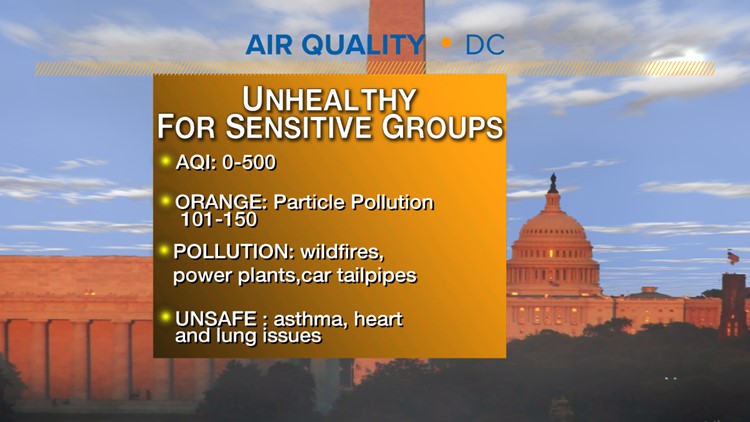A code orange air quality alert has been issued for our area.
RELATED: Your local forecast
What is a code orange air quality alert? In this category on the Air Quality Index, pollution levels are not safe for people who are sensitive to air pollution. This mainly impacts people with asthma, heart disease, lung issues, the very young and the very old. Experts recommend that people in these individuals not do strenuous activities outside and to take breaks if they plan on being outside. The general public is not likely to be affected.
The air quality index is on a scale of 0 to 300. Lower numbers mean better air quality. For example, good air quality is 0 to 50. A value over 200 represents very unhealthy air quality.
The air quality index accounts for particle pollution from vehicle emissions, factories and power plants, wildfires, road dust and some agricultural operations.
Weather may also impact air pollution, particularly in the summer. On warm summer days, especially when there is a persistent stretch of high pressure, air quality may decline. During prolonged high pressure, air particles are not dispersed as much and air pollutants can pile up.
Also, on sunny days with lighter winds, ground level ozone concentrations rise. Emissions from industrial activities and vehicles create nitrous oxides. Sunshine can break the chemical bonds releasing oxygen molecules which then combine to form ground level ozone. Ozone is great at blocking ultra-violet radiation in the stratosphere, about 30,000 feet up or so. But inhaling ozone can damage cells. While we can tolerate a little ozone, too much is harmful.
For more info about our region's air quality and to sign up for alerts, visit cleanairpartners.net.





